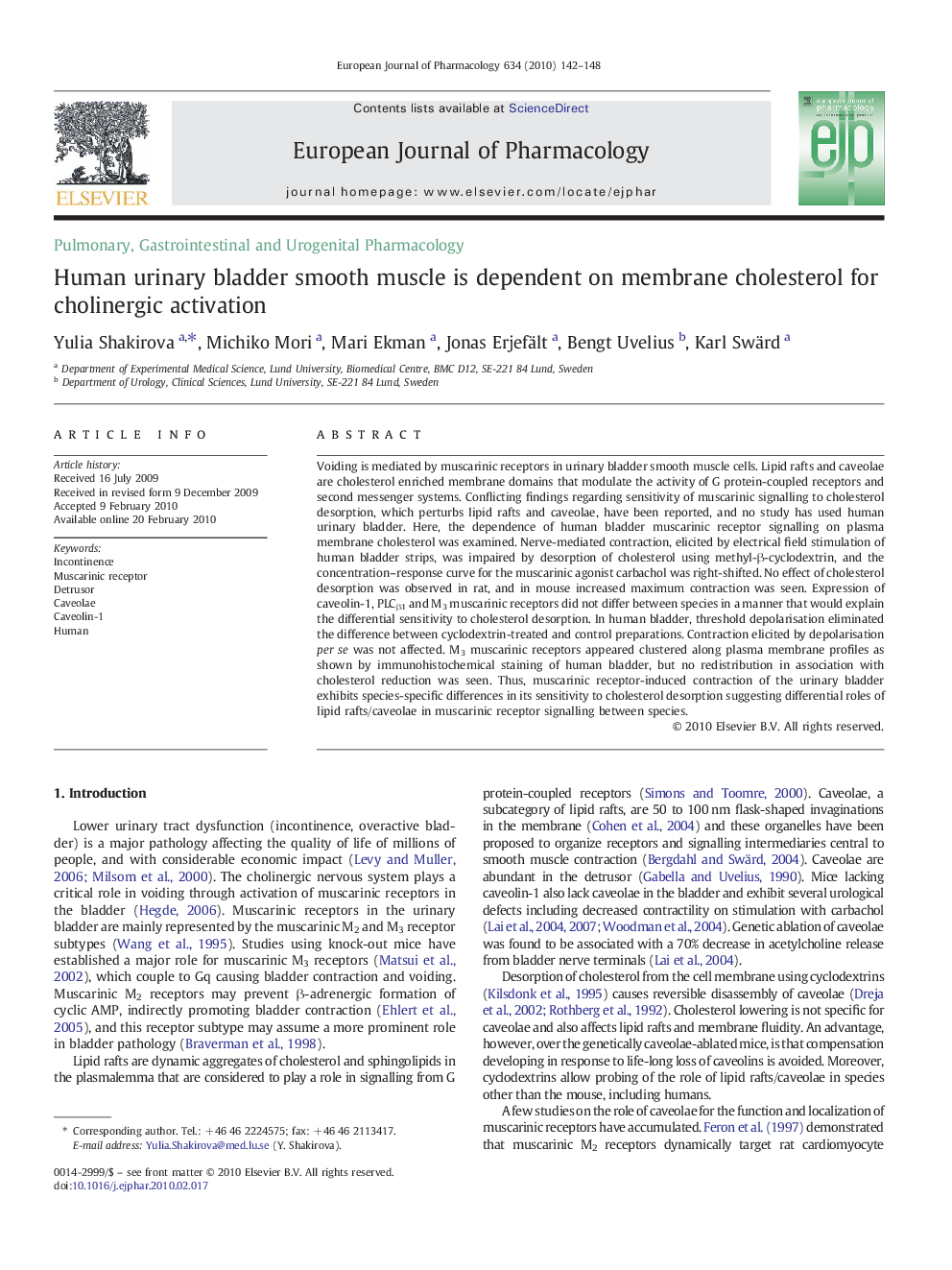| Article ID | Journal | Published Year | Pages | File Type |
|---|---|---|---|---|
| 2533569 | European Journal of Pharmacology | 2010 | 7 Pages |
Voiding is mediated by muscarinic receptors in urinary bladder smooth muscle cells. Lipid rafts and caveolae are cholesterol enriched membrane domains that modulate the activity of G protein-coupled receptors and second messenger systems. Conflicting findings regarding sensitivity of muscarinic signalling to cholesterol desorption, which perturbs lipid rafts and caveolae, have been reported, and no study has used human urinary bladder. Here, the dependence of human bladder muscarinic receptor signalling on plasma membrane cholesterol was examined. Nerve-mediated contraction, elicited by electrical field stimulation of human bladder strips, was impaired by desorption of cholesterol using methyl-β-cyclodextrin, and the concentration–response curve for the muscarinic agonist carbachol was right-shifted. No effect of cholesterol desorption was observed in rat, and in mouse increased maximum contraction was seen. Expression of caveolin-1, PLCβ1 and M3 muscarinic receptors did not differ between species in a manner that would explain the differential sensitivity to cholesterol desorption. In human bladder, threshold depolarisation eliminated the difference between cyclodextrin-treated and control preparations. Contraction elicited by depolarisation per se was not affected. M3 muscarinic receptors appeared clustered along plasma membrane profiles as shown by immunohistochemical staining of human bladder, but no redistribution in association with cholesterol reduction was seen. Thus, muscarinic receptor-induced contraction of the urinary bladder exhibits species-specific differences in its sensitivity to cholesterol desorption suggesting differential roles of lipid rafts/caveolae in muscarinic receptor signalling between species.
